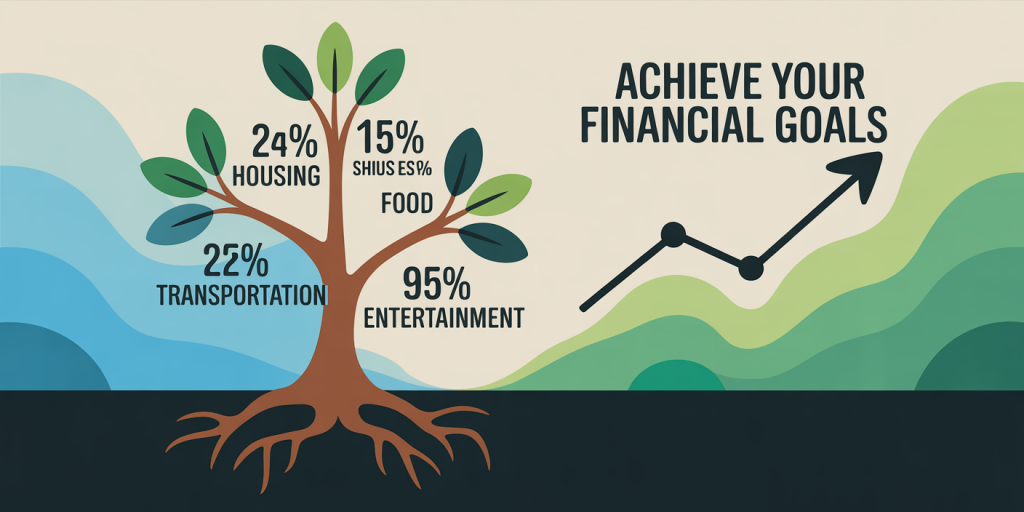Achieving financial freedom is a goal many aspire to but only a few genuinely accomplish. One of the foundational principles underpinning financial independence is the practice of living below your means. This simple yet powerful strategy enables individuals to save more, reduce debt, and accumulate wealth steadily. By spending less than one earns, people can venture beyond paycheck-to-paycheck living toward lasting security and opportunity.
Many people mistakenly believe financial freedom demands a high income or radical lifestyle changes. However, living below your means focuses more on prudent money management rather than earning an exorbitant salary. This guide explores practical principles and steps to help anyone, regardless of income level, implement this strategy and move closer to financial sovereignty.
Understanding the Concept of Living Below Your Means
At its core, living below your means means consistently spending less money than you earn. This surplus—often perceived as nothing more than leftover cash—plays a crucial role in creating savings or investment funds that build wealth over time. Unlike budgeting frameworks that emphasize restricting expenses narrowly, living below your means centers on sustainability and flexibility in lifestyle choices without accruing debt.

For example, consider Jane, a marketing professional earning $50,000 annually. Instead of inflating her lifestyle to match every raise, she deliberately limits her annual expenditures to $40,000, creating room for saving and investing $10,000. Contrast this with Tom, who earns the same but spends $52,000 by using credit, leaving him in debt despite a similar salary. Jane’s approach will position her better financially over the long term.

According to a 2023 survey by the Federal Reserve, approximately 60% of Americans struggle with emergency expenses, pointing to a significant gap between income and spending habits. Living below your means reduces dependency on credit and increases financial resilience during unforeseen events.
The Psychological and Behavioral Benefits
Beyond financial advantages, living below your means cultivates positive psychological outcomes. When you spend less than you earn, the anxiety caused by financial instability diminishes. You experience a heightened sense of control and empowerment over your money.
Repeated studies indicate that financial stress is a major contributor to mental health challenges. For instance, a 2022 report published by the American Psychological Association revealed that money worries are linked to poor sleep quality and elevated anxiety levels in 70% of adults surveyed. Practicing disciplined spending habits lessens these worries by creating financial buffers.

Behaviorally, adopting frugality encourages mindfulness in purchasing decisions. People start questioning necessity versus desire, leading to more deliberate consumption patterns. Take the case of Lisa, a software engineer. After deliberately living below her means, she learned to differentiate between impulsive purchases and long-term value-driven choices, improving her overall satisfaction with how she allocates money.
Practical Strategies to Live Below Your Means
Implementing the principle of living below your means requires actionable steps that align with your lifestyle and financial goals. Below are proven strategies that anyone can apply to start controlling expenses wisely.
1. Track Your Spending Meticulously
Begin by evaluating your current spending patterns. Use budgeting apps like Mint or YNAB (You Need a Budget) to gain comprehensive insights into where your money goes. This data sets the baseline for cutting unnecessary expenditures.
For example, a study analyzing 5,000 budgeters showed that people who habitually track expenses reduce discretionary spending by an average of 20% within three months. This reduction significantly improves cash flow availability for savings or debt repayment.
2. Prioritize Essential Expenses
Classify your expenses into essentials and non-essentials. Essentials include housing, utilities, groceries, transportation, and health care. Non-essentials cover dining out, entertainment, subscriptions, and impulse shopping.
The table below summarizes a typical budget breakdown for a middle-income earner aiming to live below their means:
| Expense Category | Percentage of Income | Suggested Optimized Percentage |
|---|---|---|
| Housing | 30% | 25% |
| Utilities | 10% | 8% |
| Groceries | 15% | 12% |
| Transportation | 12% | 10% |
| Health Care | 7% | 7% |
| Entertainment | 8% | 4% |
| Dining Out | 10% | 4% |
| Subscriptions | 4% | 2% |
| Savings & Investments | 4% | 18% |
3. Reduce Lifestyle Inflation
Lifestyle inflation occurs when increased income prompts higher spending rather than saving. Avoid upgrading your car, home, or gadgets solely because you can afford more. Instead, allocate a fixed percentage of raises or bonuses to savings.
An example is Robert, who receives an annual bonus of $5,000. Rather than spending it on luxury clothes, he channels 70% toward retirement accounts and 30% to a vacation fund. This habit ensures financial progress without sacrificing small pleasures.
4. Control Debt and Credit Usage
High-interest debt can trap you in a cycle of financial instability. Living below your means means avoiding unnecessary loans and paying down existing balances quickly. Aim to pay off credit cards monthly or use cash/debit cards to limit debt accumulation.
According to the Consumer Financial Protection Bureau, American households with credit card debt pay an average interest rate of 16% annually. Eliminating such debt frees up resources that can accelerate investment growth instead.
Case Studies Demonstrating Financial Freedom Through Frugality
Real-life examples illustrate how living below your means leads to remarkable financial milestones. Two contrasting scenarios highlight different financial paths.
Case Study 1: The Thompson Family
The Thompsons earned a household income of $85,000 but lived modestly in a 1,200-square-foot home instead of upgrading to a larger house. They drove reliable used cars and limited discretionary spending on vacations and dining. Over 10 years, this approach allowed them to save over $150,000 and pay off their mortgage early. Their disciplined spending also provided a $25,000 emergency fund and assets invested in index funds.
Case Study 2: Increased Earnings, No Savings
In contrast, Marcus, a software developer, earned $90,000 per year but succumbed to lifestyle inflation. He leased a new car, bought a larger home, and rarely budgeted. Despite earning more, his savings were minimal, and he carried $30,000 in credit card debt. When an economic downturn hit, his financial position became vulnerable, illustrating how higher income cannot replace smart spending habits.
Both examples underscore that regardless of income, living below your means forms the bedrock of financial security and growth.
Tools and Resources to Support a Frugal Lifestyle
Technology offers many tools to simplify living below your means. Budgeting platforms, spending alerts, and automated savings programs help enforce discipline and increase awareness.
For instance, programs like Acorns round up purchases to the nearest dollar and invest the difference, turning spare change into growing assets. Other effective tools include: Personal Capital: For tracking net worth and investments EveryDollar: A zero-based budgeting app Goodbudget: Envelope budgeting system to manage spending categories
Using these tools can substantially improve financial habits and maintain motivation by providing visible progress markers.
Looking Ahead: The Future of Financial Freedom
Adopting the principle of living below your means today positions you for greater financial autonomy tomorrow amid evolving economic landscapes. Inflationary pressures, changing job markets, and shifting retirement models highlight the need for adaptable, resilient money management strategies.
Financial freedom—once seen as an elusive ideal—is increasingly achievable by anyone committed to spending prudently and saving consistently. In the future, digital innovations combined with improved financial literacy programs promise to further empower individuals to take control of their money.
Furthermore, societal trends show rising interest in minimalist living, sustainable consumption, and conscious finance, all aligned with spending less than you earn. These movements not only protect personal finances but also encourage environmentally responsible choices, creating positive feedback loops for communities and the planet.
By embedding living below your means into daily life, you lay the groundwork for independence, security, and the ability to pursue passions without financial restraint. Whether preparing for retirement, entrepreneurship, or unexpected setbacks, financial freedom remains within reach through intentional, controlled spending tied to strategic saving and investing.
This comprehensive guide emphasizes that financial freedom begins not with how much you make but how wisely you manage what you have. Living below your means empowers you to build wealth, withstand economic challenges, and craft a fulfilling life grounded in security and choice.

Deixe um comentário